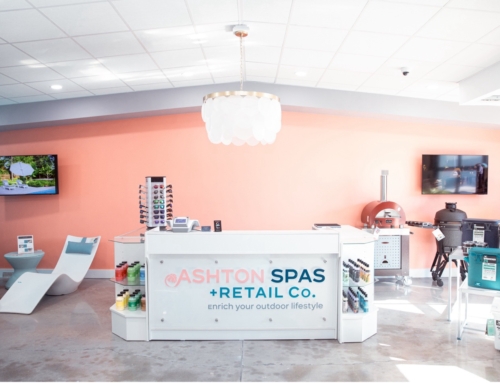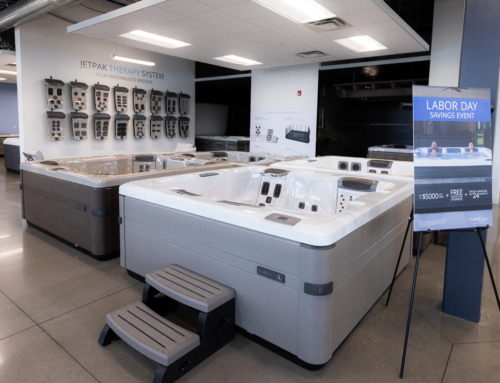As is the case with any startup, opening the doors to your new spa dealership requires a significant amount of initial capital. But how much exactly? Prior to setting up shop, you must first determine the costs and earning potential of the business before seeking the initial investment you need to grow.
Establish Your Business Model
Even if you’ve never run your own business before, you’ve nevertheless heard of the “five-year plan”–a strategy for weighing long-term revenue projections over operating expenses. Before you court investors and scout store locations, you must first establish a sustainable business model which compares costs drivers to your earning potential. You may not need to look five years into the future when starting out, but you should set clear revenue benchmarks for at least the first two years.
Before you court investors and scout store locations, you must first establish a sustainable business model which compares costs drivers to your earning potential.
Treat your business model as your guiding beacon. When pitching to investors, it can help you determine exactly how much capital you need to raise to achieve your goals. Needless to say, the more comprehensive your business model, the better the chances of receiving funding are.
Most importantly, be clear about what your business is offering. What products do you plan to stock? Is there demand? Do you provide additional services, such as repairs or installation? The better you can answer these questions, the stronger your pitch to investors.
Identify Your Cost Drivers
As you construct your business model, you want to start accounting your cost drivers. Many of these are going to be ongoing operating expenses throughout the life of your business and provide a solid basis from which you can determine cash flow potential. Sensibly, you want to keep these costs down, but you must also be realistic. As a startup, always budget for more than you anticipate spending because you never know when unexpected expenses may arise.
Location
Securing the right location is often out of your control. The cost of prime commercial properties is often astronomical, while the more affordable options are usually less than desirable. For retail startups, always look into lease options before opting to buy, especially if the property is not your first choice.
Payroll
Unless you plan on running the entire business alone, you’re going to need employees. When budgeting for payroll, you to set enough aside to attract the top talent, especially for strategic roles such as salespeople and managers.
Inventory
Inventory greatly affects your working capital. If overstocked, you may be unnecessarily tying up cash you could use to cover operating expenses. If understocked, you may be hindering your revenue. It’s important to strike a balance between fast moving and slow moving products to keep cash flow consistent.
Equipment
From delivery trucks and pallet movers to point-of-sale software and computers, your spa dealership needs equipment to do business. While you’ll need to purchase some equipment outright, you should also consider leasing to lower your breakeven point and increase cash flow.
Fixed Expenses and Accounts Payable
Finally, don’t forget to account for your fixed costs and accounts payable. Many of these expenses are never going away, such as utilities, licensing fees, banking fees, etc. Vendor and long-term loan repayments can also qualify as fixed expenses.
Secure an Initial Investment
With your plan set and your costs forecasted, you’re ready to pursue investment sources. To raise the startup capital you need, you have a number of options, each with their own set of limitations and advantages. Depending on your needs and personal resources, you may find that certain funding sources work better than others.
Personal Investment
Investing in your own spa business–or bootstrapping–is the best way to guarantee full stakes in ownership and reduce your debt burden. Needless to say, this requires a significant amount of personal assets that few new entrepreneurs have. However, if you have the resources to cover startup costs, bootstrapping should be the first option you consider.
Family Borrowing
Reaching out to friends and family for a startup loan can be risky; but if you maintain strong familial ties, borrowing from family is a viable option. You gain the funding you need without relinquishing control of your business. However, these deals are often handshake agreements based in good faith, meaning you could run into trouble should relationships sour.
Bank and Business Loans
If personal and familial assets are in short supply, business loans can provide the capital you need–at a cost. Depending on your lender, terms can vary wildly. If borrowing from the bank, you face increased underwriting and the risk of defaulting. Commercial financers, such as venture capitalists and alternative lenders, accept losses and risk, but you forfeit a portion of your stake in the business. Other options, such as government-backed SBA loans, come with long approval periods and extensive oversight.
Crowdsourcing
Becoming increasingly popular in the advent of social media, crowdsourcing is way to generate financing through small public contributions, either donated or incentive-based. This model is better suited for brand-based initiatives, but with enough word-of-mouth, can work for retail entrepreneurs as well. However, depending on the crowdsourcing platform, success in not always guaranteed. Often, crowdsourcing campaigns go unfunded if the minimum goal isn’t reached.
Venture Capitalists and Angel Investors
If traditional lending sources fail to procure the funds you need to set up shop, angel investors and venture capitalists can close the gap. Generally, these are high-wealth investors who buy into your company for a stake. They assume risk and accept losses; however, they also take a significant portion of control over your business. The upside is, if your business fails, you’re not left swimming in loan debt. On the other hand, if your business succeeds, you lose a fair share of the profits.
Raising Too Much Capital?
Believe it or not, there is such a thing as raising too much capital, especially when working with VCs and angel investors. When you enter into a shareholding agreement with an investor, you first must provide a valuation of your company based on expected earnings and total assets. If you overvalue your business, you may face impossible growth expectations. A business that’s valued at two or three times what it’s actually worth means your investor expects that much of a return–and quickly.
A business that's valued at two or three times what it's actually worth means your investor expects that much of a return–and quickly.
Whenever you cede partial control of your business in exchange for capital investment, be wary of how large a share you give. In the early stages of a startup, the more control you have, the better off you are. While you may not grow as fast, you are free to make your own decisions and adjust your business model as needed. With an invested partner, change doesn’t come as easy. Worst case scenario, if growth expectations don’t pan out as planned, your investor can pull out, often leading to premature bankruptcy.
Room for Growth
Finally, you need to determine whether your capital goals provide room for future growth. For new businesses, who often have shorter outlook projections than established companies, this means looking further ahead into the future.
After a few months in business, take stock of your performance. Are costs increasing? Is revenue on target? Next, take a look at current consumer economic trends. Is consumer spending up? Is demand stagnant, receding or increasing? The answers to all these questions will help you determine the need for capital expansion and whether the time is right to grow your business.









Leave A Comment